Calendar -National Holidays & Special Events in Japan
- National Holidays
- Special days & Events
- The First Day of The Year (Ganjitsu or Gantan, 元旦) /January, 1st
- The Day Before The Calendrical Beginning of Spring (Setsubun, 節分) /February, 3rd or 4th
- The Girls' Festival (Hinamatsuri, 雛祭り) /March, 3rd
- Valentine's Day (バレンタイン) /February, 14th
- Cherry-Blossom Viewing Picnic Party (Ohanami, お花見) /Late March - Early April
- Children's Day (Kodomo-no-hi, 子供の日) /May, 5th
- Star Festival (Tanabata, 七夕) /July, 7th
- Fireworks Festival (Hanabi-taikai, 花火大会) /July - August
- Bon (盆) /August, 13th - 17th
- Christmas (クリスマス) /December, 25th
- New Year's Eve (Ōmisoka, 大晦日) /December, 31th
- Japanese Holiday Seasons
National Holidays
2014 & 2015
Red color days are holidays in 2014. Blue color days are holidays in 2015.January
- 1st, 1st /The First Day of The Year (Ganjitsu, Gantan, 元旦)
- The most important day for Japanese. Almost all Japanese go to shrines for saluting Japanese Gods and praying for a happy new year. - 13th, 12th /Coming-of-Age Day (Seijin-no-hi, 成人の日)
- The day for honering young people who have reached the age of 20 as new members of society. Many young people dress up (most young women wear Japanee traditional dress, "kimono (着物)", and atend ceremonies.
February
- 11th, 11th /National Foundation Day (Kenkokukinen-no-hi, 建国記念の日)
March
- 21th, 21th /Vernal Equinox Day (Shunbun-no-hi, 春分の日)
April
- 29th, 29th /The Birthday of The Showa Emperor, Hirohito (Shouwa-no-hi, 昭和の日)
- Showa is the name of the era between 1926-1989.
May
- 3rd, 3rd /Constitution Day (Kenpou-kinenbi, 憲法記念日)
- The day of he effectuation of the Constitution of Japan. - 4th, 4th /Greenery Day (Midori-no-hi, みどりの日)
- 5th, 5th /Children's Day (Kodomo-no-hi, こどもの日)
- The day for the healthy growth of boys. Parents who have boys exhibit a traditional Japanese war helmet (Kabuto, 兜) and a huge a carp streamer (Koinobori, こいのぼり), and boys eat a special rice cake (Chimaki, きまき).
July
- 21th, 20th /Marine Day (Umi-no-hi, 海の日)
September
- 15th, 21th /Respect-for-the-Aged Day Holiday (Keirō-no-hi, 敬老の日)
- 23rd, 23rd /Autumnal Equinox Day
October
- 13th, 12th /Health and Sports Day (Taiiku-no-hi, 体育の日)
November
- 3rd, 3rd /Culture Day (Bunka-no-hi, 文化の日)
- The day of proclamation announcement of the Constitution of Japan. - 23rd, 23rd /Labor Thanksgiving Day (Kinrōkansya-no-hi, 勤労感謝の日)
December
- 23rd, 23rd/The Emperor's Birthday (Tenōtanjyō-bi, 天王誕生日)
- The birthday of the present Emperor.
Special Days & Events
The First Day of The Year (Ganjitsu or Gantan, 元旦) /January, 1st
The first day of the year is called "Ganjitsu" or "Gantan" in Japanese. Generally, Japanese visit their parents and stay with family in Gantan. Also, almost all Japanese go to shrines for saluting Japanese Gods and praying for a happy new year. Therefor all shrines and public transportation are very crowded. The special cuisine for Gantan is called "Osechi (お節)", beautifully arranged in lacquer boxes. Each dish and ingredient in osechi has meanings, such as good health, good harvest, happiness, prosperity, long life, and so on. Big shops and department stores are usually open in Ganjitsu, but small shops or private shops often are closed for 1/1-1/3 (Sanganichi, 三が日).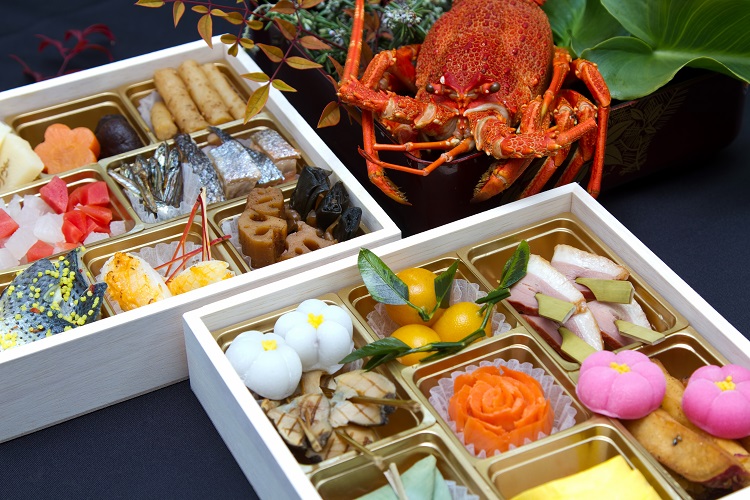
The Day Before The Calendrical Beginning of Spring (Setsubun, 節分) /February, 3rd or 4th
Setsubun means the day when season changes. Jaoanese in olden times thought bad events happened when season change, so the events for exorcising have been held. It is customary to scatter parched beans (to out evil spirits and summon good luck) and eat a thick roll of sushi wrapped in seaweed called "Futomaki (太巻き)" with looking toward favourable direction.Valentine's Day (バレンタイン) /February, 14th
Even in Japan, Valentine's Day is populat event for lovers, but there are some diferences between Japanese Valentine and other countries' one. On Valentine's day, women give special men chocolate for a declaration of love in Japan. The men who are given chocolate give women retern chocolate with a reply to the declaration on 3/14 called White day (ホワイトデー).The Girls' Festival (Hinamatsuri, 雛祭り) /March, 3rd
On 3/3, parents who have girls display Japanese traditional dolls called "Hina-ningō (雛人形)" that represent the Emperor, the Empress and their attendants and pray for growth and happiness of girls.
Cherry-Blossom Viewing Picnic Party (Ohanami, お花見) /Late March - Early April
One of the Japanese sense of beauty is a transitoriness - everything is changing and wil disappear befor long. The scene of petals of cherry blossom scattering calls Japense the sence to mind, so cherry blossom is one of the symbol of Japanese culture, and a lot of pemos, pictures, and art works that have the cherry blossom motif were generated. Therefore cherry blossom is the most popular flower for Japanese, and most Japanese go to park in order to hold a party with viewing cherry blossom in late March - early April when cherry blossoms are bloom.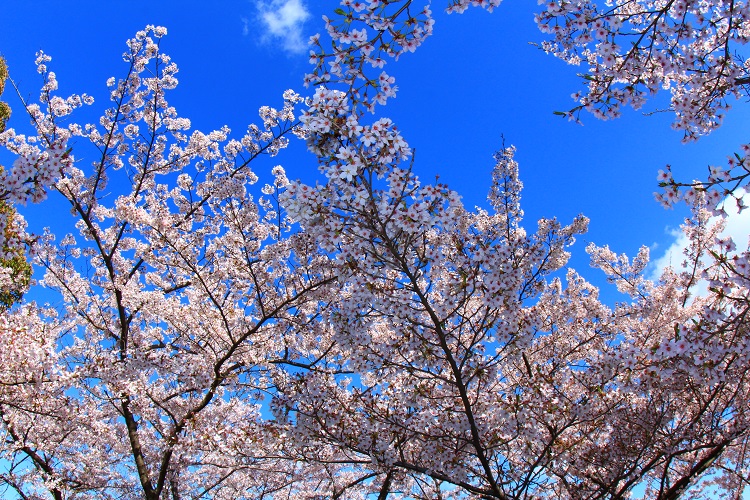
Children's Day (Kodomo-no-hi, 子供の日) /May, 5th
On 5/5, parents who have boys exhibit a traditional Japanese war helmet (Kabuto, 兜) and a huge a carp streamer (Koinobori, こいのぼり), and boys eat a special rice cake (Chimaki, きまき).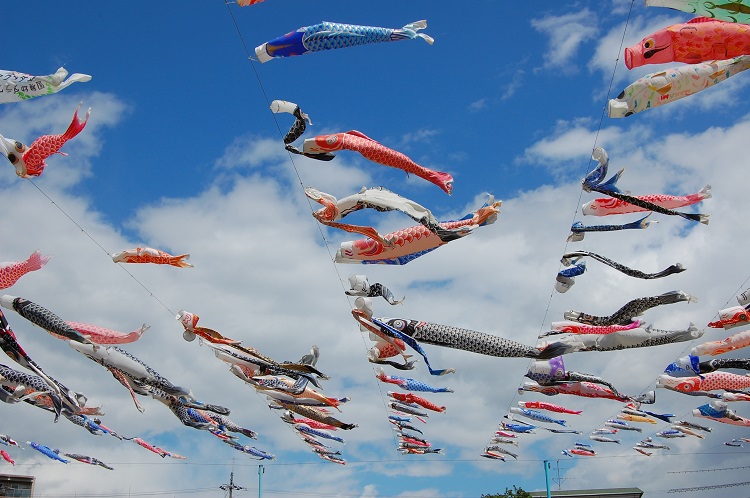
Star Festival (Tanabata, 七夕) /July, 7th
The festival is based on a Chinese legend that an intimate couple Hikoboshi (star Altair) and Orihime (star Vegar) separated by the Milky Way can cross the river and meet once a year on 7/7. Many shrines exhibit bamboo, and it is called your wishes come true by hanging the brances strips of colored paper "Tanzaku (短冊)" that your wishes are wrriten on.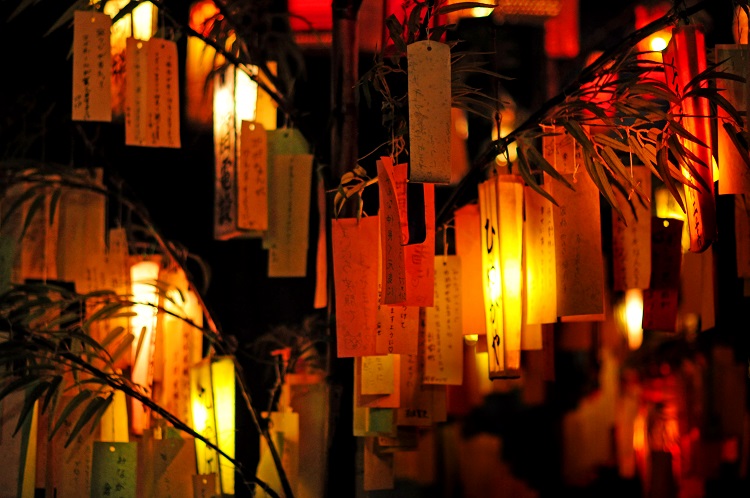
Fireworks Festival (Hanabi-taikai, 花火大会) /July - August
Fireworks are a common feature in the Japanese summer time, many fireworks are held all over Japan in July - August. You can enjoy not only seeing fireworks, but also boothes selling snaks and offering attractions in eireworks festivals. Also, some of Japanese attending to the festival wear a traditional clothes for summer called "Yukata (浴衣)".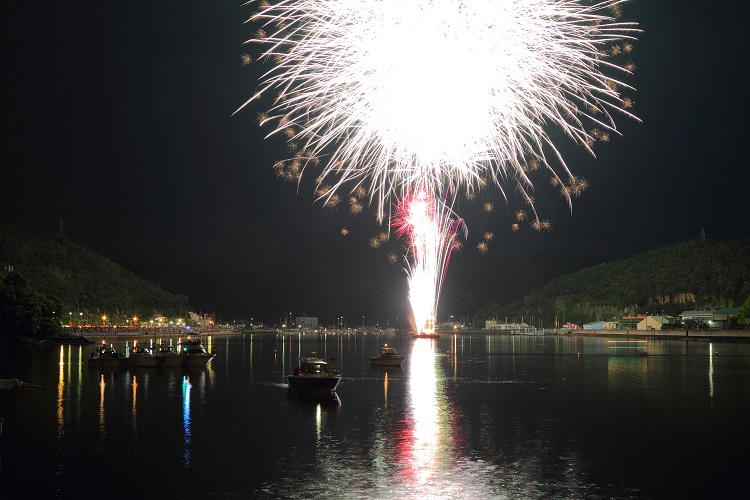
Bon (盆) /August, 13th - 17th
Bon is a Japanese ritual ceremony like "All Soul’s Day", and Japanese retuen to their hometown in order to welcome the souls of the progenitors from the other world, and it continues till the souls return. In the period, many ritual events such as the ceremonial bonfire (Okuribi (送り火), the bonfire as the signs for souls) and setting lantern adrift (Tōrō-nagashi (灯篭流し), it is believed that souls ride on the lanterns floating water and return to the other world that is across the sea.) are held. Especially, the ceremonial bonfire in Kyoto is very popular. It is called "Gozan-no-okuribi (五山の送り火)", and each huge bonfires that is in shape of characters and pictures is made on 5 mountains in Kyoto. Also, Japanese take holidays in this period (mainly, 8/1 - 8/14), so it is hard to make a reservation for Shin-kansen and airplanes.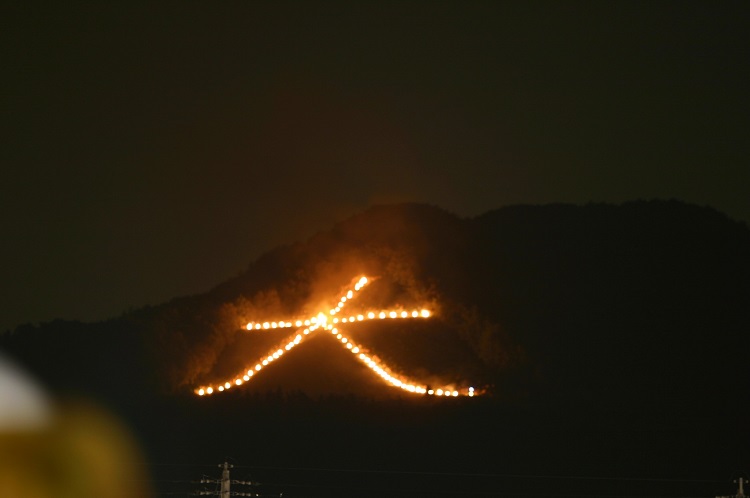
Christmas (クリスマス) /December, 25th
For Most Japanese, Christmas has no religious implication, and it is just a day for making a party and spending time with lovers or family. (Of course, Christians exsit in Japan, and Christmas is an important day for them.) Many buildings, facilities and home are decorated with illuminations, and the atmosphere in Japan get more glittering.
New Year's Eve (Ōmisoka, 大晦日) /December, 31th
There is a custom for eating Soba (one kind of Japanese nodole) on 12/31, and many Japanese eat it and wait for a new years with friends or family. Also, Buddhists in temples ring the their big bell 108 times. According to the teachings of Buddha, human being has 108 worldly desires, and one sound of the bell can extinguish.Japanese Holiday Seasons
Spring Vacation
(For university students): February - March(For other students): March
(For buisiness men): 2 weeks in March
Golden Week
(For all): The end of April - The first of MaySummer Vacation
(For university students): August - September(For other students): August
(For workers): Mainly, 2 weeks including Bon period.